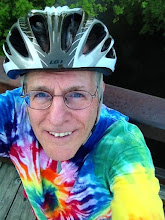The political cynic in me is aroused.
The raids reported below in the New York Daily News took place on National Meth Awareness Day. I wondered, did DEA just recently discover all of those labs and as a coincidence they happened to raid them on the same day, which happened to be Meth Awareness Day? Or did they learn of these labs in recent weeks or months and decide to wait to raid them all together for the media splashiness of it, on National Meth Day? If the latter, was DEA really worried that these meth labs might lead at any moment to dangerous explosions in apartment buildings in New York City? Either there was a grave danger and DEA ignored that grave danger to the public in order to make a media splash, or DEA believes that the danger of explosion is greatly exaggerated but useful for snookering the news media.
From the New York Daily News, December 3, 2006
The meth menace: Addictive drug is creeping up social ladder
By Austin Fenner and Tina MooreSphere: Related Content
New York Daily News
NEW YORK - Methamphetamine - once considered the drug of choice in the backwoods - is moving up in society. Experts say methods for "cooking" the drug have become less noxious over the past decade, making meth labs a friendlier fit for apartment buildings like the one on Manhattan's East Side, where federal agents announced a bust last week.
"Back in the day, cooking meth was a very smelly process," said Steve Robertson, special agent and spokesman for the DEA. "That's why meth labs would go into rural areas. You would have them out in little shacks out on farms or ranches."
Agents from his agency announced Thursday - National Meth Awareness Day - that they had busted a clandestine meth lab at an East Side high-rise. They also announced nine other meth lab busts in the city and on Long Island.
The local meth labs highlight a change in the face of methamphetamine use - long a rural drug consumed most often by lower-income men and women.
"There's no question that there has been an increase of meth use in the city," said Dr. Petros Levounis, who runs the Addiction Institute of New York. "The transformation from Sudafed to meth is extremely, extremely easy."
The busts announced last week added another twist to the meth dilemma: Two of the men arrested, both professionals, were making the drug for personal consumption.
Meth labs - even rural mom and pop labs - are usually run to turn a profit.
Michael Knib, an information technology vice president for Citigroup, told agents he started producing the drug because he lost his sources when he moved to the city from Seattle, investigators said.
Mehmetcan Dosemeci, a 28-year-old doctoral student in history and Fullbright Scholar at Columbia University, told agents that he was making the drug in his Manhattan Avenue flat to stay awake. He researched cooking meth on the Internet.
The production of meth puts the people making the drug and those around them in danger. Meth labs - where vaporous chemicals are hard to detect - are known to explode.
"It's unsettling," said a neighbor in the Manhattan Avenue building where Dosemeci lived. He did not want to be named in this story. "He was taking a risk with other people's lives."
A retired 69-year-old clerk, who also did not want to provide his name, was dumbfounded.
"If it blows up, what is he going to say to the people who wind up in the morgue?" he said. "Who needs to stay awake for up to three days?"
The ease with which the drug can be made has prompted action in Washington.
A federal law that took effect in September bans over-the-counter sales of certain cold medicines with ingredients used to make meth, including pseudoephedrine and ephedrine.
The law requires buyers to show photo identification and allows them to purchase only a 30-day supply.
Robertson, who started out as a clandestine-lab investigator in the Southwest in the mid-1990s, said changes in the meth culture shifted into high-gear when recipes were posted on the Internet.
"Then all of a sudden it was there," he said. "People were cooking in the backs of cars, in hotel rooms and apartments. It was everywhere."





3 comments:
My Brother got involved with meth and then died shortly after from suicide. I really appriciate people that work in this field and I wanted to thank you for the work that you are doing.
http://sms100.blogspot.com/
Great resource. keep it up!!Thanks a lot for interesting discussion, I found a lot of useful information!With the best regards!
David
I am a DEA licensed distributor of ephedrine and pseudo ephedrine (cold and allergy medicines) that are regulated by DEA due to their use as a primary ingredient in the illicit production of meth. I have first hand knowledge of how much the government, particularly the DEA, was involved in the spread of meth and meth labs in the late 90’s and early 2000. Go to my website at www.methwarscirca2000.com and you will be able to see records that document the DEA’s culpability in the spread of meth labs and meth use across the country.
John Harris
Post a Comment